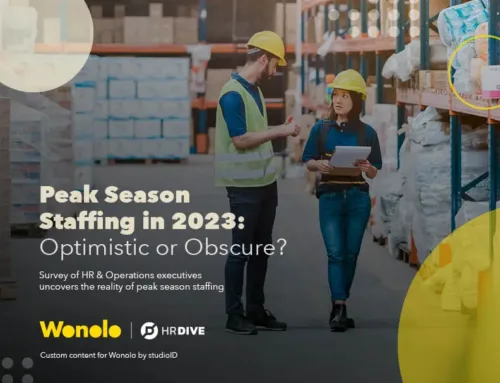Wonolo
Multiple studies are beginning to draw a clear picture about the future of work. One facet of that future is the need for a flexible workforce. Businesses and employees alike are seeking options for flexibility. Workers desire the ability to earn money apart from the tradition style of doing business. Now, more and more organizations are realizing the potential of employing those who are flexible to have plenty of staffing when the business needs it — and save money when it doesn’t.

Definition of Flexible Workforce
Simply put, a flexible workforce describes a staff that is optimized for when it is needed. This flexibility can mean multiple things depending on the nature of your business. For some organizations, it could mean hiring multiple temporary employees for a spike in business. Or, training temporary employees to take on full-time roles. A flexible workforce could be a mix of full-time, part-time, and temporary employees for larger businesses. Many businesses can benefit from a flexible workforce, such as:
- Tax Preparation
- Skilled Trade (i.e., Welder)
- Delivery Service (i.e., Food, Documents)
- Construction Work
- Restaurant/Events (e.g., Catering)
- Warehouse (i.e., Picking, sorting)
All of these (and many more) examples represent industries in which seasonal shifts impact demand for products and services, resulting in a fluctuating staffing demand that coincides with market shifts.
4 Benefits of a Flexible Workforce
Despite the number of organizations that have predictable peaks and slow times in their business, staffing remains rigid in a number of companies. Having more employees than necessary during slower times and fewer hands on deck during busy times causes strain — often times on the bottom line. In addition to alleviating these issues, a flexible workforce has multiple benefits.
Well-Timed Workers
If your business opened the doors at 10 a.m., you probably wouldn’t schedule your first employee to come in at noon. So, if a caterer is busiest in the Spring and Summer months, you would want more wait and kitchen staff during those times. Most would think that makes sense. However, do you find yourself struggling to find help when your business takes an uptick? And are those upticks predictable?
Knowing when these increases are likely to happen is one piece of the puzzle. Having skilled workers at-the-ready is the other.
Lower Overhead
Extra capital to re-invest into the business or improved profitability are music to the ears of business owners. In many organizations, labor is the number one expense. Reorganizing your workforce toward a flexible model means having more staff when you need it, and fewer workers when you don’t. If you find yourself hiring during the busy seasons and letting attrition take care of your workers throughout the other times, it could be time for a different system.
Happy Workers
Flexible workers are often happier than those in a more traditional role. Most business owners know that new hires are usually enthusiastic and willing to learn. The training time and cost is usually the only thing that makes managers slow-to-hire. However, using a skilled and temporary workforce could alleviate this struggle — leaving the business with more upside.
An Increasing Field of Skilled Workers
The terms “side hustle,” “flexible jobs,” and “remote work” are just a few of the buzzwords that have been rolling around the business world for a while — and these concepts are continuing to gain steam. More and more businesses are using part-time, flexible employees. This increase is due to the number of people choosing to work on more flexible terms, and that’s good news for businesses that have fluctuating staffing needs, as the pool of qualified potential workers continues to grow.
How to Implement a Flexible Workforce

Flexible workforce planning depends heavily on the nature of your business and how you currently staff for those needs. If you desire a more maneuverable team, think about your implementation in the following key steps.
Take a Current Workforce Snapshot
Understanding how your business is staffed and has historically been staffed is an important start. Once you have these numbers, compare it to your monthly revenue.
- Where are the times that you’ve had too many employees?
- Not enough workers?
- Is this feast/famine a consistent number year after year?
In addition to these considerations, you’ll need to know the specifics of those who make up your team(s).
- How many full-time?
- Part-time?
- Temporary?
- Skilled laborers?
Breaking down your workforce into exactly who does what and when they do it is important. Knowing everything about how you currently staff will highlight potential areas for flexibility.
Plan Necessary Changes
In many cases, an accurate snapshot of your current staffing compared to revenue will show obvious potential changes. Making those changes, however, need to be planned out and thought through. For instance, reducing your workforce immediately may create different problems. Perhaps employees who are let go knew how to do certain tasks that remaining workers do not know how to do.
Understand Staffing Resources
Reducing and increasing your workforce at different times of the year requires a flexible source of skilled workers. It’s wise to test these resources and find the provider that suits the needs of your business. Once you know where your flexible workers are going to come from during the busy times, you’ll be better able to implement your flexible workforce plan.


![[Report] Beyond the Gig: Exploring Reliable Work Options for the Modern Workforce](https://info.wonolo.com/wp-content/uploads/2023/10/Worker-Preferences-Report-Header-Image-500x383.png)



